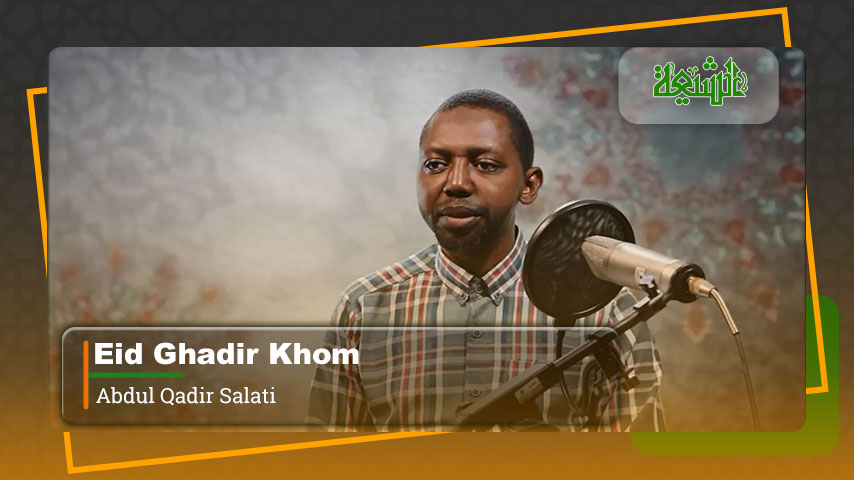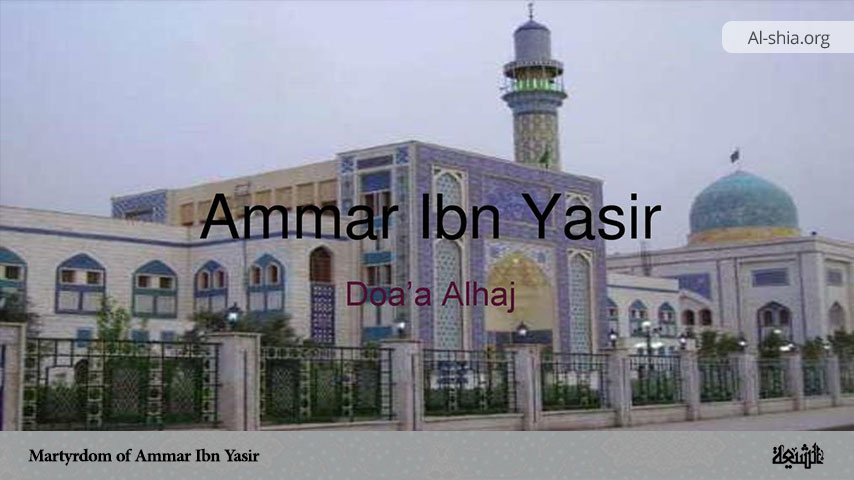Imam Jafar Ibn Muhammad Al-Sadiq was one of the members of the pure Prophet’s Household [Ahl al-Bayt] and the sixth Imam of Shia Muslims. He (PBUH) has had a high status in the eyes of prominent Sunni scholars, as some of them were among the people who quoted hadiths from him. He is highly revered among Muslims for his knowledge, piety, and contributions to Islamic jurisprudence and theology. Because of the significant role of Imam al-Sadiq (PBUH) in the elaboration of Islamic teachings, Twelver Shiism is often called Ja’fari School[1] and the Imam is known as its head.
In this article, we shall be looking at the biography of His Eminence covering areas such as his family and educational background, leadership role, academic contributions in the Islamic society and his martyrdom.
Lineage, Teknonyms and Titles
Imam Jafar As-Sadiq is a member of the pure Prophet’s Household. His father was Imam Muhammad al-Baqir (a). His mother was a descendant of Abu Bakr known as Umm Farwa the daughter of al-Qasim son of Muhammad ibn Abi Bakr[2].
His famous teknonym was Abu ‘Abd Allah (because of his second son, ‘Abd Allah al-Aftah). In some sources, other teknonyms such as Abu Isma’il (because of his eldest son, Isma’il) and Abu Musa (because of his son Musa al-Kazim (a) are mentioned[3]. His famous title was al-Sadiq which means “The Truthful”[4], which according to narration was given to him the Messenger of Allah (peace be upon him and his household) in order to distinguish him from Ja’far al-Kadhdhab[5].
His Birth
According to reliable reports, Imam Jafar Sadiq (PBUH) was reported to be born in Medina on the 17th of Rabi’ al Awwal 83 A.H/April 20, 702[6]. However, some historians and biographers have mentioned his birth in 80/699[7].
His Upbringing
Imam Jafar (PBUH) was brought up under the guidance of his grandfather, the fourth Shia Imam; Imam Ali Zayn al-Abidin who was martyred when he was twelve years old. Then up to the age of 31, he passed his time under the guidance of his father Imam Baqir (PBUH). It was the time when Umayyad politics was tottering and Muslims were approaching Imam Baqir (PBUH) in thousands. The Imams of the Ahl al-Bayt fulfilled their need for knowledge[8].
His Early life
The childhood of Imam al-Sadiq coincided with the growing interest of Medinans in religious sciences and the interpretations of the Qur’an. It is known from various history books and various sources of Hadith that when Imam As-Sadiq was a young boy, he used to come to the schools and Madrasas founded by his father the fifth Imam and instead of learning as many other youngsters and older pupils did, he used to discuss serious matters of Fiqh and Jurisprudence with much older students of the Madrasas[9].
In one such discourse when he was only 11 years old, when he entered a classroom where pupils were discussing the subject of astronomy, he pointed out to the surprise of everyone except his own father, that the earth cannot be flat, because of the way the sun rises in the East and sets in the west and day and night change in 24 hours, it cannot be possible. In his opinion, the earth must be round; otherwise, this would not have happened in such a precise manner. All the students were astonished but his father smiled and said nothing[10].
Meanwhile, with the martyrdom of his grandfather, Imam Zayn al-Abidin (PBUH), Imam Jafar al-Sadiq entered his early manhood and participated in his father’s efforts as the representative of the Household of Muhammad (Ahl al-Bayt)[11].
His Wives and Children
There is limited historical information available about the wives and children of Imam Ja’far al-Sadiq, some details have been passed down through historical accounts and Islamic traditions. It is believed that Imam Jafar al-Sadiq had multiple wives, although specific details about their identities and numbers are not well-documented in historical sources. The prominent among his wives was Hamida who according to Allamah Majlisi was believed to have four children: Musa ibn Ja’far, Ishaq, Muhammad and Fatima[12].
Shaykh Mufid has listed ten children[13] for Imam Jafar Sadiq (PBUH). The prominent among his children were Imam Musa al-Kadhim, Abdullah al-Aftah, Ishaq, Muhammad, Umm Farwa, Asma and Fatima[14].
His Imamate
In 114 Hijri (732 AD), Imam Baqir (PBUH) was martyred[15], and the responsibilities of Imamate devolved on the shoulders of Imam Ja’far Sadiq. During the imamate of Imam al-Sadiq (PBUH), the Umayyad rule started to decline and eventually collapsed, and then the Abbasids acceded to power. The weakness of the rulers created a good opportunity for the Imam (PBUH) to engage in scholarly activities[16].
Hisham Ibn Abdul Malik was still ruling in Damascus and political disturbances were afoot. The passion for taking revenge on Bani Ummayah was strong and several descendants of Imam ‘Ali (PBUH) were preparing themselves to overthrow the regime.
Imamate of Imam al-Sadiq (PBUH) lasted thirty-four years[17]. His Imamate is characterized by his profound knowledge, teachings, and contributions to Islamic jurisprudence and theology. During this period, Imam al-Sadiq (PBUH) served as the spiritual leader and guide for the Shia Muslim community and the Muslim community, providing guidance on religious matters and disseminating knowledge to his followers.
His Scholarly Contributions
The Imamate of Imam Ja’far al-Sadiq represents a period of profound scholarship, spiritual leadership, and intellectual flourishing within Shia Islam. His teachings and scholarly contributions, ethical teachings, and spiritual guidance have left an indelible mark on Islamic thought and jurisprudence, leaving a lasting legacy that continues to influence Muslim thought and scholarship to this day. Meanwhile, some of his notable contributions include:
1. Islamic Jurisprudence (Fiqh): Imam al-Sadiq (PBUH) made significant contributions to the development of Islamic jurisprudence, particularly through his establishment of the Ja’fari School of jurisprudence (Ja’fari fiqh), which is followed by Shia Muslims. His teachings laid the foundation for the Shia legal tradition.
2. Hadith Collection and Compilation: Imam al-Sadiq is renowned for his vast knowledge of Hadith (sayings and actions of the Prophet Muhammad) and for establishing the principles of Hadith collection and authentication. His school of thought contributed to the preservation and transmission of Hadith literature.
3. Science and Philosophy: Imam al-Sadiq fostered a culture of learning and inquiry, encouraging his followers to pursue knowledge in various fields, including astronomy, mathematics, medicine, and alchemy. He promoted the integration of reason and revelation, paving the way for the development of Islamic philosophy.
4. Ethical and Spiritual Guidance: Imam al-Sadiq emphasized the importance of moral conduct, piety, and spiritual growth. His teachings on ethics and spirituality continue to inspire Muslims to strive for personal excellence and righteousness.
5. Interfaith Dialogue: Imam al-Sadiq engaged in dialogues with scholars of other faiths, promoting understanding and tolerance among different religious communities. His efforts contributed to the exchange of ideas and cultural enrichment during the Islamic Golden Age.
His Martyrdom
There is a disagreement about the day and the month of the martyrdom of Imam al-Sadiq (PBUH). The famous viewpoint of earlier Shia scholars is that it was in Shawwal, but the day is not mentioned in earlier sources. However, later sources considered Shawwal 25 (December 14, 765) as the day of his martyrdom[18]. The governor of Medina by the order of Al-Mansur al-Dawaniqi poisoned him (PBUH). The funeral prayer was conducted by his younger son, Imam Musa al-Kazim, the Seventh Imam, and his body was laid to rest in the cemetery of Jannatu’l-Baqi in Medina.
Conclusion
Imam Jafar al-Sadiq (PBUH), considered by Shia Muslims as the sixth Imam and a significant figure in Sunni Islam, contributed to various fields during the Islamic Golden Age. He played a pivotal role in the dissemination of Islamic knowledge, particularly in the fields of theology, jurisprudence, philosophy, and science. His legacy continues to reverberate within the Shia Muslim community and beyond. He is revered as a righteous leader and a model of piety and knowledge for Muslims around the world.
Like his predecessors, Imam Jafar al-Sadiq (PBUH) faced persecution and opposition from the ruling authorities of his time, particularly the Umayyad and Abbasid caliphs. Despite these challenges, he continued to disseminate knowledge and uphold the principles of justice and righteousness.
References
[1] . Shahīdī, Sayyid Jaʿfar. Zindigānī-yi Imām Ṣādiq Jaʿfar b. Muḥammad (a), p. 61.
[2] . Mufīd, Muḥammad ibn Muḥammad, Al-Irshād fī maʿrifat ḥujaj Allāh ʿalā l-ʿibād, vol. 2, p. 180.
[3] . Pākatchī, Aḥmad, Imam Jaʿfar Ṣādiq (a), p. 181.
[4] . Ibid, Pākatchī, Aḥmad, Imam Jaʿfar Ṣādiq (a), p. 181.
[5] . Ṣadūq, Muḥammad ibn ʿAlī, Kamāl al-dīn wa tamām al-niʿma, p. 319.
[6] . Mufīd, Muḥammad ibn Muḥammad, Al-Irshād fī maʿrifat ḥujaj Allāh ʿalā l-ʿibād, vol. 2, p. 180.
[7] . See: Irbilī, ʿAlī b. ʿIsā, al-Kashf al-ghumma, vol. 2, p. 691.
[8] . cf. Syed Muhammad Raza Shabbar, Story of the Holy Ka’aba and its people, p. 73.
[9] . cf. Syed Muhammad Raza Shabbar, Story of the Holy Ka’aba and its people, p. 72.
[10] . Ibid. cf. Syed Muhammad Raza Shabbar, Story of the Holy Ka’aba and its people, p. 72.
[11]. Jafri, S.H.M, Origins and Early Development of Shia Islam, p. 180.
[12] .Majlisī, Muḥammad Bāqir, al-Biḥār al-anwār, vol. 47, p. 241.
[13] . Mufīd, Muḥammad ibn Muḥammad, Al-Irshād fī maʿrifat ḥujaj Allāh ʿalā l-ʿibād, vol. 2, p. 209.
[14] . Ibid. Mufīd, Muḥammad ibn Muḥammad, Al-Irshād fī maʿrifat ḥujaj Allāh ʿalā l-ʿibād, vol. 2, p. 209
[15] . Nawbakhtī, Ḥasan ibn Musā, al-Firaq al-Shīʿa, p. 61.
[16] . Shahīdī, Sayyid Jaʿfar, Zindigānī-yi Imām Ṣādiq Jaʿfar ibn Muḥammad (a), p. 47.
[17] . Mufīd, Muḥammad ibn Muḥammad, Al-Irshād fī maʿrifat ḥujaj Allāh ʿalā l-ʿibād, vol. 2, p. 180.
[18] . Pākatchī, Aḥmad, Imam Jaʿfar Ṣādiq (a), p. 187.


















